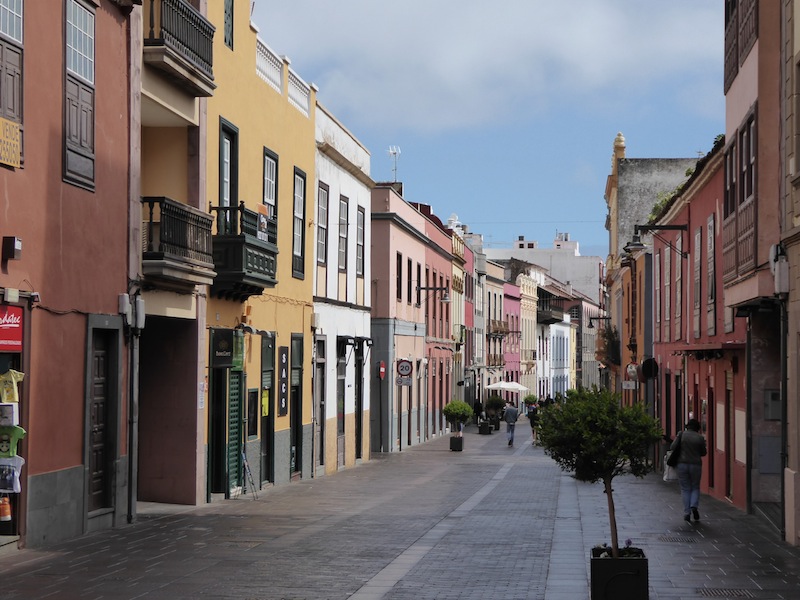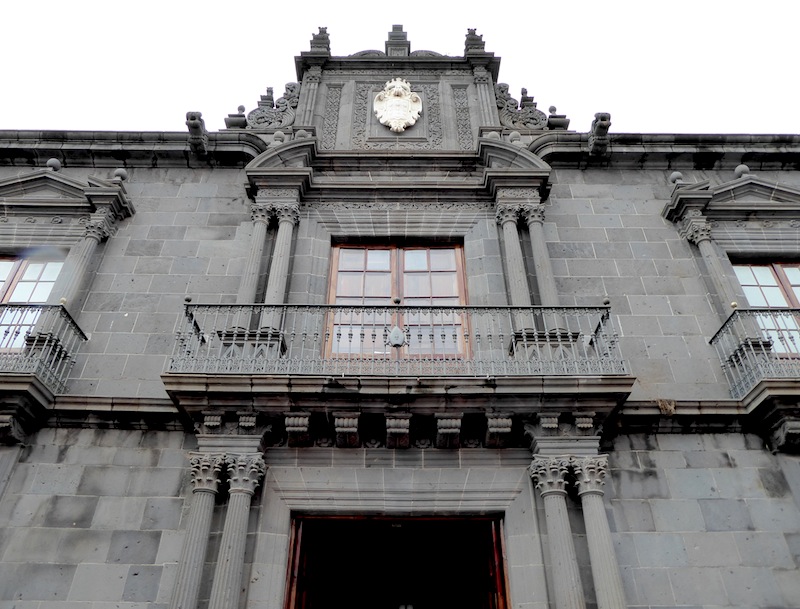If I learnt anything in Tenerife, it’s never to trust a sat-nav. After the traumas of getting to Teide, our expensive piece of tech managed to land us, somewhat embarassed, in the pedestrianised shopping streets of the UNESCO World Heritage Site of La Laguna.
All I wanted to do was park the car but it took a lot of weaving around narrow streets to find a space. If only I’d listened to Lonely Planet, which had warned us that parking was a nightmare in the historic town centre. We ended up in a car park that went deep into the bowels of the earth and that caused me yet more stress courtesy of all the tight turns and even tighter parking spaces. And then we couldn’t find the bloody tourist office.

La Laguna (or Lar Largoonar as the sat-nav described it) is about half an hour’s drive away from Puerto de la Cruz – an otherwise simple journey up the motorway. Despite my mood, which was as gloomy as the weather, there’s no denying that it’s a handsome town, full of colourful, colonial Canarian mansions from the 16th, 17th and 18th centuries, many with spacious, attractively planted courtyards. Once the capital of the island and still a university town (the streets were packed with students at lunchtime), La Laguna also has its fair share of religious pomposity.
The historic heart revolves around the Catedral de Nuestra Señora de los Remedios but it’s by no means the most attractive of the buildings in town. We ambled around, taking in the sights, and kept finding ourselves at the Iglesia de la Concepcion – a handsome church with a prominent tower. But this being a Monday in continental Europe, it was closed, along with many of the other buildings listed in the guide book. Typical…

The history museum, the Museo de Historia y Antropologia de Tenerife, was open in the charming Lercaro House. Dating from the 16th century, it has lots of wonky wooden floors and various other period features. The displays are a mixed bag but we had an English language booklet from reception to help make sense of it all.
The rooms covered everything from the aboriginal peoples who lived on Tenerife before the genocidal Spanish arrived, through to the birth of tourism in the late 19th century. Graham didn’t take much in – he was too busy rushing around looking for a loo. However, the wooden balconies overlooking the shaded courtyard were a real treat.
We stopped at Montanes House, home of the Canarian Government’s Advisory Council, and admired their small but beautifully planted courtyard while trying to ignore the many signs telling us to be quiet (and the guard who was on hand to deliver a sound beating if we disobeyed).

Rather more stark on the exterior was the Episcopal Palace or Casa Salazar (pictured top). Its grey baroque frontage of volcanic stone hides a bigger courtyard and a dramatic tale. In 2006, it and its many treasures were badly damaged by a fire but it was then completely restored and is now back in use. The palace used to be the home of the Counts del Valle de Salazar, who commissioned it in the 1660s. In the 19th century it became the seat of the Bishops of Nivaria and it still houses religious offices today. In fact, the lovely garden housed a gruesome if temporary collection of sculptures that only the Catholic Church could put together – think dismembered body parts and other horrors.
Fire is clearly a hazard in La Laguna. On our way for a reviving coffee and to collect the car, we wandered past the shell of San Agustin, built in the early 16th century but gutted around 50 years ago. It, however, is still awaiting a makeover…

